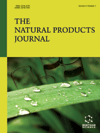
Full text loading...
To evaluate the anti-oxidative and radioprotective role of Pontibacter indicus SCG24 pigment during radiation exposure.
Radiation-induced cytotoxicity is quite common during cancer therapy. There is a need for naturally derived therapeutic molecules that can scavenge free radicals. They may act as substitutes for synthetic molecules. Hence, there is a need for urgent evaluation of these potent compounds before therapeutic application.
The objective of this study is to examine the anti-oxidative and radioprotective role of P. indicus SCG24 pigment, specifically to evaluate free radical scavenging X-ray irradiated HDF cells.
A radiotoleraent pigment-producing P. indicus SCG24 was isolated from pharmaceutical effluent. Chloroform was used as a primary solvent for pigment extraction. GCMS/MS analysed initial pigment composition. Various in-vitro antioxidant assays were performed using ABTS, FRAP, and DPPH assay. Flow cytometry was used to determine the rate of scavenging activity of pigment in HDF cells.
The GCMS/MS profile of the chloroform extract revealed twenty-two compounds. Furthermore, based on the DPPH, ABTS, and FRAP assay, the pigment was found to have significant antioxidant properties. The flow cytometry results indicate that the pigment possesses radioprotectant activity by neutralizing ROS species in HDF cells when exposed to X-ray radiation.
These observations on P. indicus SCG24 pigment suggested that the pigment may have potential therapeutic importance.

Article metrics loading...

Full text loading...
References


Data & Media loading...
Supplements

